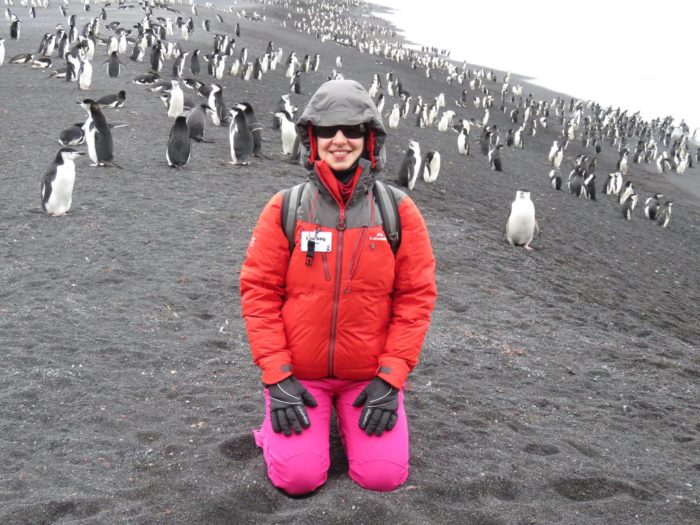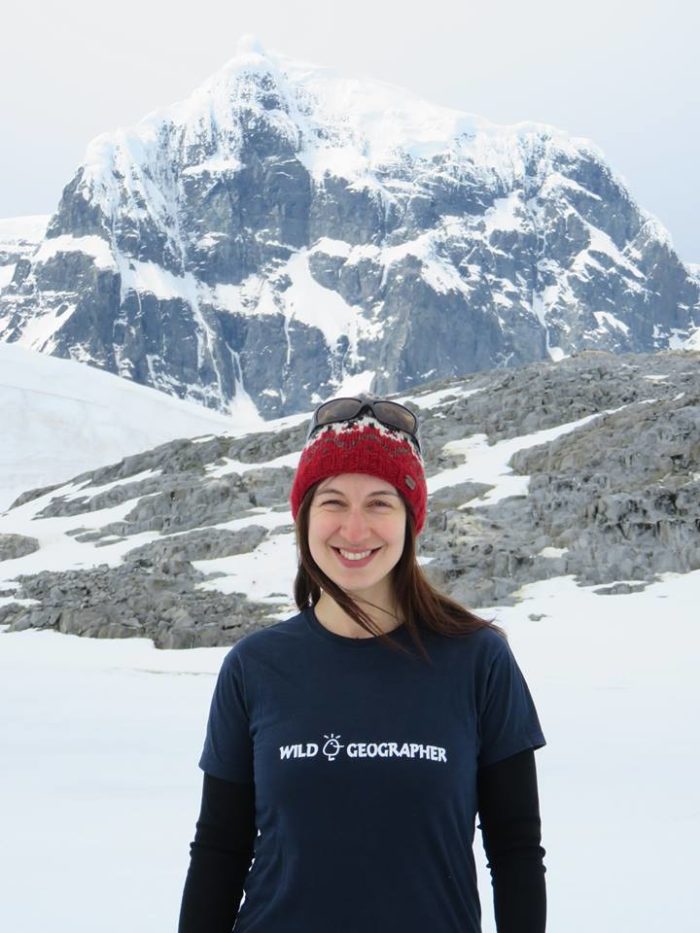My journey to the end of the Earth
Professor Lindsay Stringer of the School of Earth and Environment at the University of Leeds was one of 76 scientists who took part in an all-women expedition to Antarctica. The project, Homeward Bound, is a leadership, strategic and science initiative that aims to heighten the impact of women scientists in decision making and policy. This blog contains edited extracts of her personal blog, which can be read in full here. She is interviewed on Paul Hudson’s Weather Show on Sunday 15 January
2 December 2016: Lead up to embarkation
Thursday was the grand launch of the Homeward Bound Programme. We met up with all the other participants and were introduced to the faculty members who will be working with us on the trip, as well as the film crew who are making the documentary. There’s extensive coverage with far more photos of the launch here and the launch of the movement for change the project seeks to promote was unveiled through this short film.
After the excitement of the launch last night and the frantic re-packing before we had to check out from the Air BnB this morning, I’m now typing this sat in an internet cafe. We have to meet the others again ready for the pre-check-in and customs processes in just 2.5 hours. My next post will be when we dock again on 21st December. I’ll write up what I can as I go. Wish us luck as we set sail…! #letsdothisthing
4 December: Into Antartica
During the afternoon of the second day after a briefing about wildlife and biosafety, we entered the English Channel, the route to our first landfall. We had our Zodiac [inflatable boat] safety briefing, were given our lifejackets and proceeded to the Zodiacs to go ashore on Barrientos Island, Aitcho Island group. The crossing was good fun, a little bumpy but never feeling unsafe. Just as well as the water was around 1 degree so not really the kind of temperature you want to be falling in!
The island was partly covered in snow and was packed full of penguins, chinstrap and gentoo. There were also some elephant seals lounging on the beach. While we weren’t allowed to go within 5m of the wildlife, if they came to us that was ok.
It was so amazing to see these creatures going about their lives. It was quite something to smell them as well – penguin guano is rather pungent, so it took a bit of getting used to.


As well as for all our future excursions, on our return to the boat we had to scrub our boots to ensure there was no organic matter or other kind of dirt on them as part of the biosafety protocol. Once changed we ate lunch and proceeded with the afternoon’s programme of leadership training.
6 December: Carlini Research Station
Our next landing was something a bit different: a stop off at Carlini research station, a very hospitable Argentinian base which seemed to be operating in partnership with German researchers. It was really good to talk to those researchers who were working there and some of whom had been over-wintering. We asked lots of questions about things like where they get their water from, how they dispose of their waste, as well as getting to see their labs, living quarters, bar, cinema and gym! Their main concern seemed to be a lack of drinking water because the reservoir from which they draw their water was very low. Climate change and unexpected weather patterns (drought) really is striking everywhere.
Back on the ship later that day after our training programme, I went up on the bridge and admired the icebergs. It’s crazy to think that 85% of an iceberg is under the water and we only see the very top of it. Icebergs come from glaciers and are the bits that break off. The ones we were cruising past can be 3000-4000 years old.

The captain and his officers explained that aside from watching out for icebergs on the radar, they also have to contend with sea ice (the stuff that can cause boats to get stuck). The sea ice moves around so requires particular caution as you can easily enter a small channel in the ship and then not be able to get out until the tide changes and the ice moves.
10 December: Whale! Charlotte Bay and Portal Point
It often happened that in the middle of one of the science sessions, calls of “Whale!” were heard as someone happened to glance out the window and spot something interesting. I’m sure there were a few times the “Whale!” call was made when people just wanted a break too!
Today, however, upon going outside, I was astounded to see several humpback whales surrounding our ship. I tried taking photos but none of them fully capture the sight of these magnificent creatures emerging from the water and then diving to get the krill they feed on.
My list of “things I want to do in Antarctica” included “look down a crevasse”. Today was the day to do that one! We had to lay down and peer in to reduce the risk of it opening further and us falling through. [Other things on Lindsay’s list included: lick an iceberg; sit on an iceberg and swim in the ocean – check her blog for further instalments to see if those were realised!]
A couple of other notable things happened at the top of the hill. First, we took some photos with the Wings World Quest flag that the expedition as a whole had been awarded. They aim to support women in science, female explorers and the quest for solutions to global problems. Wings World Quest Flag Carriers are “women leading original field research or documentation that focuses on investigating questions about the nature of our world and advancing conservation efforts on land, air and water through science and advocacy” according to the WWQ website.
The other notable event at the top of the hill was a big snowball fight. Needless to say, it was lots of fun and a good stress release!

Professor Lindsay Stringer will be presenting a seminar, “Homeward Bound: a female quest for a more sustainable planet”, as part of the Sustainability Research Institute’s seminar series at the University of Leeds on 25 January.
Acknowledgements
This trip was funded from the following sources whose support is gratefully acknowledged: The School of Earth & Environment, Leverhulme, The Priestley International Centre for Climate, The ESRC Centre for Climate Change Economics and Policy (CCCEP), University of Leeds which granted an award for International Research Collaboration.
Photo credits: Lindsay Stringer
